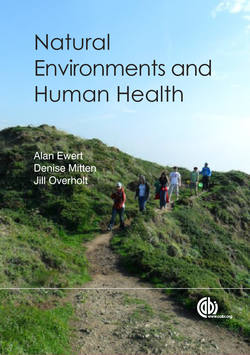Читать книгу Natural Environments and Human Health - Alan W Ewert - Страница 20
На сайте Литреса книга снята с продажи.
What are WorldViews?
ОглавлениеWorldViews are comprised of collections of images and stories that people use to help make sense of the complex world around them (Marten, 2001). In other words, WorldViews are ontological in that they refer to a way of being and knowing about the world. In this case, the word ‘world’ is not used in a geographical sense, but rather to refer to the entire perceptual content of an individual (Aerts et al., 1994).
Our WorldView is personal, though it is conceptualized by social, cultural, and environmental interactions. These interactions dictate to a large degree what we value and how we view the world around us. In this case, the world we view is the totality of our lives, including all to which we relate from our spiritual, physical, affective or emotional, intellectual or cognitive, and social areas of life. On a practical level, having a WorldView increases our understanding of our place and relationship to everyone and everything within our sphere, and therefore can offer us security and comfort. Given that humans live in groups, we tend to share a paradigm (some groups of people call this a story) or a collection of paradigms (stories) which can be seen as a collective WorldView that we use to explain life, the world, and how we should be in the world. These shared views become dominant WorldViews. Paradigms or WorldViews are held for particular areas, such as religion, philosophy, science, political movements, and how we perceive our connection with nature. These societal WorldViews shape behavior, politics, relationships, institutions, and the totality of our perceptions, and therefore how we act as a group. As different WorldViews become dominant they influence so much of our thought or perspective about a subject that this influences the overall direction of development of that area. For example, large-scale archeological evidence of warfare dates back to less than 7000 years ago, but a dominant paradigm today is that defense and warfare are inevitable and part of human life (and death). The rest of this chapter focuses on the development of dominant WorldViews as they pertain to the natural environment and, consequently, how they impact our relationship to the natural world.
Even with dominant WorldViews, there are people within that society and people and groups outside the dominant culture who have had and have WorldViews differing from the predominant paradigm. Sometimes within a culture there are clashes with WorldViews, as displayed in the 2012 US elections concerning control over women’s reproductive rights. Throughout history we can identify dominant WorldViews about nature as well as alternative WorldViews that have been present. As we present the various collective WorldViews in this chapter, remember to think about the voices and therefore alternative perspectives of WorldViews not often talked about in history or in the present, or even known about by many other people. Also remember that WorldViews do not have to be fixed. Given our cognitive abilities as human beings, we can consciously work toward a WorldView that provides sustainability for the human species.
